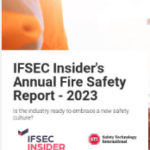Following new advice from fire safety experts commissioned by the Secretary of State earlier this year, the Government has set out that EWS1 (External Wall System) Forms should no longer be requested for buildings below 18m.
Housing Secretary, Robert Jenrick, made the announcement on 21 July, following the advice that “makes clear there is no systemic risk of fire in these blocks of flats”, according to the expert report.
The report recommends that residents are reassured as to safety, and a more proportionate approach is urgently instituted, requiring action by all market participants.
A group of major high street lenders has committed to review their practices following the new advice; HSBC UK, Barclays, Lloyds Banking Group and others have said that the expert report and Government statement paves the way for EWS1 forms to no longer be required for buildings below 18m and will help further unlock the housing market.
The Government has said it welcomes their support, but is now calling on others to demonstrate leadership by working rapidly to update guidance and policies in line with the expert advice.

Housing Secretary, Robert Jenrick
Housing Secretary Robert Jenrick said: “This announcement is a significant step forward for leaseholders in medium and lower-rise buildings who have faced difficulty in selling, anxiety at the potential cost of remediation and concern at the safety of their homes.
“While we are strengthening the overall regulatory system, leaseholders cannot remain stuck in homes they cannot sell because of excessive industry caution, nor should they feel that they are living in homes that are unsafe, when the evidence demonstrates otherwise.
“That’s why I commissioned an expert group to further examine the issue, and have already agreed with many major lenders that lower-rise buildings will no longer need an EWS1 form, and the presumption should be that these homes can be bought and sold as normal.
“We hope that this intervention will help restore balance to the market and provide reassurance for existing and aspiring homeowners alike. The Government has made its position very clear and I urge the rest of the market to show leadership and endorse this evidence based safety approach.”
The expert advice was commissioned by the Secretary of State after witnessing what Dame Judith Hackitt, Chair of the Independent Review of Building Regulations and Fire Safety, has described as extreme risk aversion, which has left leaseholders across the country receiving costly bills for remediation that is not necessary.
Read the full response from the expert advisors on building safety in lower-rise blocks of flats, here.
It states that fire risks should be managed wherever possible through measures such as alarm systems or sprinklers, and that the overwhelming majority of medium and low-rise buildings (those under 18m) with cladding should not require expensive remediation.
The intervention is designed to reduce needless and costly remediation in lower rise buildings and is part of wider efforts to restore balance to the market, helping flat owners to buy, sell or re-mortgage homes.
There is a longstanding legal duty on the Responsible Person for all purpose-built blocks of flats to have an up-to-date fire risk assessment. Moving forward, where the Responsible Person has identified fire safety issues they should update their fire risk assessments to determine any actions required. This could include measures such as installing sprinklers or alarms and in exceptional cases, remediation to ensure buildings are safe and people feel safe.
To help with this, new guidance for the risk assessment of external wall systems will be introduced. The PAS9980 will ensure that fire risk assessments are consistent, proportionate to risk and actions to manage risk are cost-effective, and the Consolidated Advice Note will be withdrawn.
For buildings under 18m which do require remediation, the Government will introduce a financing scheme so that no leaseholder will have to pay more than £50 a month for the cost of replacing unsafe cladding. Further details of this scheme will be set out in due course.
At present, there is no confirmation on expected timelines for this move to be fully implemented, while others have highlighted concerns for those who have already paid for remediation measures and whether they will be eligible for refunds.
Industry response
Welcoming the support from the fire safety profession and from major lenders, Dame Judith Hackitt (one of this year’s IFSEC Global Top Influencers in Fire Safety) said: “I am pleased to see the support and commitment to returning to an evidence-based proportionate approach to fire and building safety. It’s critical, given the significant – and in many cases unnecessary – impact this is having on people who live in and own homes in blocks of flats. What’s needed now is for the remaining bodies and lenders to get onboard so we have a collective, fact-based system that is reflective of the reality of the situation and reassures leaseholders that they, their homes and their investments are safe.”
The move has been backed by the National Fire Chiefs Council and the Institution of Fire Engineers.
CEO of the Institution of Fire Engineers, Steve Hamm, said: “The IFE supports the expert statement issued today. We expect this will lead to a significant reduction in the demand for the EWS1 process from mortgage valuers, particularly for buildings under 18m in height.
“Today’s statement will support competent fire engineers to use their professional training, judgement and expertise to assess buildings based on professional appraisal of risk. This should enable a move away from the often risk-averse and overly cautious approach that has been seen in many cases.
“We welcome the commitment of all parties to ensure a proportionate and evidence-based approach to fire and building safety for all buildings along with the increased scrutiny to be provided by the new Regulators and the gateway approval process, which we expect will lead to improved levels of safety, providing comfort and reassurance for residents and homeowners as well as the wider market.”
Chair of the National Fire Chiefs Council (NFCC), Mark Hardingham said: “We fully support this new advice and welcome the challenge to those who are applying an overly risk-averse approach in many buildings below 18m. We expect this will start to redress the balance where disproportionate measures have been put in place to manage fire risks. We want to ensure that buildings are safe and will work closely with fire and rescue services to apply the advice for buildings in their area.”
The Government says it has also set out plans for developers of high-rises in England to contribute to the cost of remediating safety defects. A consultation published today outlines that the levy will be applied when developers seek permission to build certain high-rise residential buildings of 18 metres or more in height.
The money recouped would be designed to contribute towards fixing historic fire safety defects, including unsafe cladding, protecting leaseholders and taxpayers from shouldering the burden of remediation costs.
The Government is calling for views on the proposed design of the levy, which was first announced earlier this year as part of multi-billion-pound package to fix unsafe cladding on high-rise residential buildings, alongside wider financial and regulatory support.
The Government has also confirmed that the Building Safety Fund will reopen for applications in Autumn for any eligible buildings that missed the original deadline in June, with more details to be published in the coming months.
DOWNLOAD: Fire safety in 2020 eBook – A year of challenges and change
This article was originally published on IFSEC Global.
Safety & Health Podcast
Hear from Gill Kernick about the pressing need to improve building safety culture post-Grenfell.
Subscribe and tune in the Safety & Health Podcast to discover the latest issues facing the health and safety profession, and stay on-top of the developments affecting your role, from working at height, lone working and common workplace hazards, to safety culture, behaviours, occupational health and mental health and wellbeing.
Fire Safety in 2023 eBook
SHP's sister site, IFSEC Insider has released its annual Fire Safety Report for 2023, keeping you up to date with the biggest news and prosecution stories from around the industry.
Chapters include important updates such as the Fire Safety (England) Regulations 2022 and an overview of the new British Standard for the digital management of fire safety information.
Plus, explore the growing risks of lithium-ion battery fires and hear from experts in disability evacuation and social housing.


